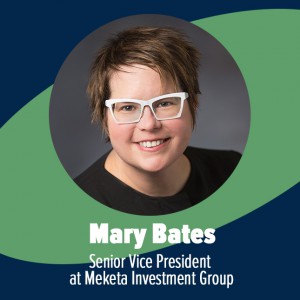Unpacking specialty finance: what is it and what does it offer?

 What is specialty finance, and what do these more niche strategies have to offer for investors? Mary Bates, Senior Vice President at Meketa Investment Group, provides us some guidance in our exclusive interview.
What is specialty finance, and what do these more niche strategies have to offer for investors? Mary Bates, Senior Vice President at Meketa Investment Group, provides us some guidance in our exclusive interview.
How do you define specialty finance?
Specialty lending can be broadly defined as non-bank lenders that target commercial and consumer borrowers that are not adequately served by traditional banking channels. Specialty lending stands in contrast to corporate direct lending in two ways: specialty lending is not cash flow-based lending and it is not nearly as easy to explain. In direct lending, a loan is directly originated to a private company (typically with an EBITDA of less than $50 million) and is secured by the cash flows of the company. By contrast, specialty lending ties to the performance of specific assets (credit card receivables, equipment leases, consumer installment loans, merchant cash advance, etc.) and investment managers often are providing financing, primarily through highly structured asset-backed facilities, to specialty finance companies who originate the loans.
What are the primary investing considerations, including benefits and risks, for institutional investors?
The current lack of institutional sponsorship arguably is one of specialty lending’s most favorable attributes. Unlike direct lending where roughly $54 billion was raised in 2017 (according to Preqin), between $3 to $5 billion in dedicated specialty lending assets was raised over the same period. Managers, in turn, do not need to compete nearly as aggressively on price or terms. That said, specialty lending can be a difficult space for larger LPs to access given the capacity constraints of many funds. Additionally, the complexity and variety of strategies can make the strategy a challenge.
To what extent is capital moving from core private debt strategies to these more niche offerings?
If the number of pitch books received is any indicator, the increased interest in specialty lending funds over the past six to nine months has been meaningful. That said, the number of direct lending funds, including the number of first time funds, has not ebbed. We are currently working with a public fund who is initiating an allocation to alternative credit (both semi-liquid and private credit) and a dedicated allocation to direct lending is not likely going to be among that LP’s first allocations.
In terms of inflows, which sectors within specialty finance have seen the most activity? Do you expect any meaningful changes for the remainder of this year? In 2019?
Based on funds in the market, aviation finance seems to be a strategy with significant activity. The thesis largely ties to demographics (i.e., an increase in discretionary income, particularly in the emerging markets), which is expected to fuel the growth of air traffic over the next decade coupled with the growth of the leasing market. Implementation varies with managers capitalizing on different opportunities based on the type of aircraft, where it is in its lifecycle, and/or focused on specific parts of the aircraft.
In terms of changes, we are seeing more diversified (i.e., multi-strategy) specialty finance funds come to market and expect that to continue.
What is the role of asset-based collateral in terms of risk control?
While specialty lending deals are bespoke, structure is a key risk mitigant. Most deals isolate the performance of the assets in bankruptcy-remote Special Purpose Vehicles, separating the performance of the collateral from the performance of the operating company. The structure also often gives control of the cash collection to the manager. Moreover, the loan is typically structured as self-amortizing, meaning both interest and principal are paid back throughout the life of the investment. This cash flow profile materially reduces the risk of investment as there is no need for refinancing or a capital markets exit unlike in a bullet cash flow (which is the primary structure for direct lending transactions).
How might a continued rise in interest rates impact specialty finance?
Specialty finance assets are typically short duration, limiting the impact of a near term rise in interest rates. The assets collateralising specialty lending deals often will allow for a full self-amortization of the transaction inside of one to two years vs. the three to five years more typically seen in corporate direct lending deals. Further to this point, most specialty lending deals are floating rate, ameliorating rate risk.
---
Under the spotlight: Mary Bates
Mary Bates is Senior Vice President at Meketa Investment Group. Prior to joining Meketa Investment Group, Mary was a Principal in the Private Markets group at PCA, and the Director of Credit Strategies at Silver Creek where her responsibilities included leading the firm’s consultant relations effort, serving as a product specialist and underwriting private credit managers. Prior to joining Silver Creek, Mary spent over eleven years at Hewitt EnnisKnupp where she most recently served as a Senior Research Consultant on the Liquid Alternatives team, focused on credit-related hedge funds.